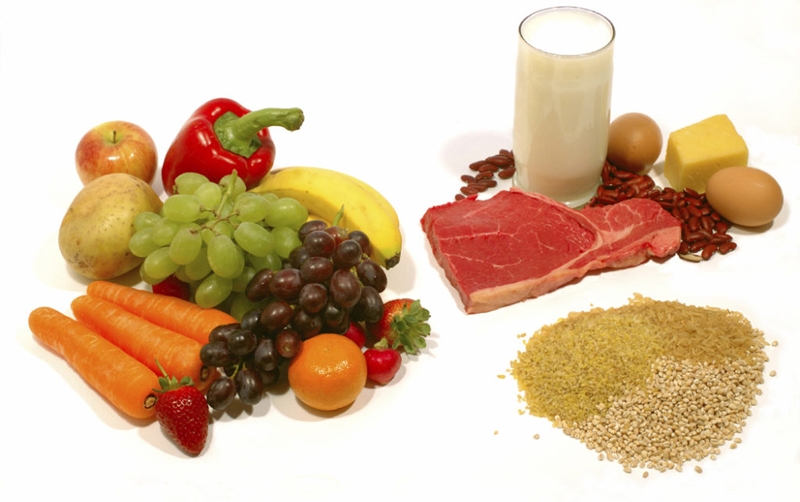You are viewing 1 of your 1 free articles. For unlimited access take a risk-free trial
Athletes and vitamin supplementation: what’s the truth?

Recent research shows that multivitamin and mineral supplementation is a popular practice among athletes; but is it actually necessary, and if so, how should athletes make sensible choices?
Of all the nutritional supplements used by consumers, vitamin and mineral supplements that purportedly support health are undoubtedly the most popular, and consumption of multivitamins multiminerals as dietary supplements is widespread across the globe. In the general US adult population some 33% of Americans regularly take such products(1-4). With the coronavirus pandemic, this trend has likely accelerated, especially in the context of nutrients that may support immunity. According to a 2020 study by Innova Market Insights, 54% of global supplement consumers say they have spent time educating themselves on ingredients that can support immune health(5).Vitamin/mineral use in athletes
Among competitive athletes who undergo the rigors and demands of heavy training loads, the use of vitamin/mineral supplements is even more ubiquitous. A study last year on elite eastern European athletes found that no less than 62% of respondents regularly used vitamin/mineral supplements(6). Another study on American Football players found that 65% used vitamin supplements and 50% mineral supplements(7). Meanwhile, research on recreational gym users in Portugal found that nearly 40% used multivitamin/mineral supplements in the belief that they are able to accelerate recovery, improve performance and increase energy levels(8).The research suggests that athletes use vitamin/mineral supplements to optimize nutrition by supplementing deficient nutrients. In particular, supplement users express a desire to improve their immune system and improve body composition(9). However, research also suggests that athletes may lack knowledge about dietary supplements, which could mean that they may not be used for their intended purpose, or may not be compatible with normal eating habits(10).
Panel 1: The importance of vitamins and minerals
Vitamins (which are complex organic molecules) and minerals (which are generally single atoms of metals), mostly work by combining with enzymes in our bodies, acting as ‘biochemical sparkplugs’ - helping many thousands of life-sustaining cellular chemical reactions to occur that would otherwise not occur or occur too slowly to sustain life. Because we cannot manufacture them, vitamins and minerals MUST be present in sufficient quantities and in the right ratios in the foods we eat if we are to thrive and be healthy. Poor food choices, cooking, processing, refining, storage and modern agricultural practices (where crops may be grown in soils lacking in certain minerals) can all lead to lower levels of nutrients in food. This in turn may lead to nutrient deficiencies and poorer health in vulnerable individuals.Pros and cons of vitamin supplements
In spite of their popularity, many people (athletes included) remain confused about the use of vitamin and mineral supplements and what role they should (or shouldn’t) play in a dietary plan. This can be observed in the study on eastern European athletes cited above(6). Despite the widespread use of vitamin supplements, analysis of these athletes showed that the day-to-day dietary fundamentals in many of them were still flawed; more than 60% of the athletes were consuming insufficient dietary carbohydrates, while 38% of the athletes surveyed also had diets low in protein. The message in a nutshell: whatever the potential benefits of vitamin/mineral supplements, their use won’t give you a free pass to get the basics wrong!The findings above also help to explain why many scientists remain sceptical about the value of vitamin/mineral supplements for athletes. The argument is that all the nutrients required for health can and should come from the foods we eat. Since athletes eat more food to fuel activity than their sedentary counterparts, they will inevitably consume more nutrients. There’s also the argument that shelling out hard-earned cash on supplements may be an expensive waste of time, especially when this money could be used to buy more nutritious food in the first place.
However, the argument for supplement use is not without merit. In the today’s world of intensive agriculture, where crops may be force grown in soils depleted of trace minerals, fruits and vegetables are routinely picked unripe and then artificially stored and ripened, and where nutrient depleting food processing and refining practises becomes ever more commonplace, it becomes very difficult for even the most health conscious athlete to be certain about the nutritional content of the food on their plates. Add in the heavy training demands, modern lifestyles that have become ever more demanding and stressful, and the fact that even athletes may be regular users of carbohydrate sports drinks products (which don’t contain the nutrients present in natural carbohydrates), and it’s easy to argue that these supplements may be of value.
As often, the truth is probably somewhere in between. The growing amount of intensively reared and processed/refined foods on our supermarket shelves can often mean lower nutrient contents(11) and evidence is growing that even a carefully-balanced diet may not be sufficiently rich in some key nutrients for some individuals for optimum health, particularly for certain nutrients such as vitamin D3(12). Not only that, but human nature means we’ll inevitably indulge ourselves with the odd dietary lapse. For all these reasons a good ‘broad spectrum’ multivitamin/mineral supplement may be beneficial, especially during periods of increased stress or for example when travelling away from home. However, athletes should not delude themselves that taking supplements, gives them carte blanche to live on a diet contain large amounts of junk, processed or sweetened foods as nothing could be further from the truth. It’s only worth investing in a multivitamin/mineral supplement once you’ve already sorted out your diet, which should be based on whole unprocessed foods and rich in fruits, vegetables, whole grains and high-quality proteins – see this article on how to get the basics of day-to-day diet correct!
Practical advice for vitamin supplement purchasers
The purpose of this article is not to recommend athletes to buy or refrain from buying vitamin/mineral supplements. Rather it is to explain the arguments for and against vitamin supplement use, and the overriding importance of getting (as far as possible) the fundamental dietary basics correct. But having considered these points, if athletes are considering the purchase of a vitamin/mineral supplement to support health and/or training, what should they look for? Here are some practical guidelines that might help:- Cost – Supplements have to be taken on a long-term basis to provide real benefits. Buying an expensive supplement one month then not bothering for the next three months because you are skint is not the most scientific way to take supplements! Better to choose something affordable and to take it continually.
- Strength (see table 1) – supplements should contain enough of a vitamin or mineral to make a significant contribution to your daily requirement for that nutrient. In the US, this requirement is referred to as the ‘reference nutrient intake’ (RNI), although for some nutrients, the term ‘adequate intake (AI), may also be used. Other countries may use other terms such as ‘recommended dietary intake’ (RDI) or ‘recommended dietary allowance (RDA).Regardless of nomenclature, supplements should supply 50%+ of daily needs. Bear in mind however that daily needs may be set differently from country to country and may not be given for every nutrient, especially the trace minerals such chromium, molybdenum and manganese.
- Balance – supplements should have nutrients (especially minerals) supplied in the correct ratios. It’s worth checking that RNI/RDA figures for different minerals are roughly similar. Supplementing large amounts of one nutrient alone can induce deficiencies of other nutrients.
- Type – unless you know you have been diagnosed with a particular nutrient deficiency go for a multivitamin/mineral formulation rather than a combination of single supplement products. Not only is this route far cheaper nutrient for nutrient, but you’ll also avoid the potential problems of unbalanced supplementation.
- Range – a good supplement will supply a full range of the nutrients known to be essential to human health and not leave out trace nutrients such as manganese, molybdenum, chromium and selenium.
- Bioavailability – this is a measure of how well a supplement can be absorbed and used. Whereas vitamins are generally easily absorbed, mineral bioavailability is more problematical. Look for minerals bound to organic acids such as citrates, gluconates, fumerates, picolinates and amino acid chelates, which are generally better absorbed and tolerated than (cheaper) oxides, sulphates, carbonates and chlorides. For example zinc picolinate is far more bioavailable than zinc oxide.
- Purity – check labels for unnecessary colours, preservatives, flavours, binders and fillers as well as common allergens such as wheat, milk products, yeast corn and gluten. Vegetarians should avoid capsules containing gelatine, which comes from animal protein. To ensure a doping test is not failed, athletes engaging in competition should always ensure that any supplements taken are manufactured in a WADA-compliant facility and come with proper certification.
- Release rate –sustained release supplements aim to provide the body with a steadier flow of nutrients over a longer time period thus reducing waste. However they tend to be more expensive nutrient for nutrient compared to ordinary supplements. An easier way to produce a ‘sustained release’ is to take ordinary supplements with a decent meal.
- Physical attributes – check the size of the supplement and bear in mind that you actually have to swallow it before you can benefit! Superior supplements also use smooth coatings to ensure easy passage down the gullet. A multi-vitamin/mineral tablet might contain loads of everything but could you face the ordeal of swallowing something the size of a golf ball coated in sandpaper every day?
Table 1: US Dietary Reference Intakes (DRIs): RDAs and adequate intakes (AIs) set by the US National Institute of Health(13)

Table 1 notes: Understanding units in supplements
Most people are familiar with the unit of weight called a gram, which is about the weight of a Smartie. Apart from calcium and potassium the amounts of each nutrient required by the body each day are much less than a gram, which is why other, much smaller units are used.- The milligram – is abbreviated mg and is one thousandth of a gram. There are 1000mgs in a gram.
- The microgram – is abbreviated mcg and is one millionth of a gram. There are 1000mcgs in each milligram.
- The International Unit – is abbreviated U. It is sometimes used instead of mgs or mcgs for some of the vitamins such as A, D and E where there is more than one form of a vitamin. International units express the biological activity that different forms of a vitamin exhibit.
- The Recommended Nutrient Intake (RNI) – is the daily amount of a nutrient which is required to ensure that a gross deficiency symptom caused by a shortage of that nutrient does not occur. A recommended dietary allowance (RDA) is the average daily dietary intake level sufficient to meet the nutrient requirements of nearly all (97–98 percent) healthy individuals in a group.
- JAMA 2016;316:1464. 10.1001/jama.2016.14403
- J Nutr 2011;141:261–6
- Am J Epidemiol 2004;160:339–49
- ‘Dietary supplement use among U.S. adults has increased since NHANES III’ (1988-1994). NCHS Data Brief 2011:1–8
- khni.kerry.com/trends-and-insights/ten-key-health-and-nutrition-trends-of-this-year/ (accessed 1st Feb 2021)
- Medicina (Kaunas). 2020 May; 56(5): 247
- Rocz Panstw Zakl Hig. 2016;67(1):31-6
- J Int Soc Sports Nutr. 2020 Feb 24;17(1):11. doi: 10.1186/s12970-020-00342-z
- ‘Risks and rewards of dietary supplement use by athletes’. In: Maughan R.J., editor. Sports Nutrition. 1st ed. John Wiley & Sons Ltd.; West Sussex, UK: 2014. The Encyclopaedia of Sports Medicine, an IOC Medical Commission Publication
- Rev. Bras. Med. Esporte. 2011;17:242–245. doi: 10.1590/S1517-86922011000400005
- Foods. 2016 Dec; 5(4): 89.
- Clin Biochem Rev . 2020 Dec;41(3):103-126
- www.ncbi.nlm.nih.gov/books/NBK545442/table/appJ_tab3/?report=objectonly - accessed 2/1/2021
Newsletter Sign Up
Testimonials
Dr. Alexandra Fandetti-Robin, Back & Body Chiropractic
Elspeth Cowell MSCh DpodM SRCh HCPC reg
William Hunter, Nuffield Health
Newsletter Sign Up
Coaches Testimonials
Dr. Alexandra Fandetti-Robin, Back & Body Chiropractic
Elspeth Cowell MSCh DpodM SRCh HCPC reg
William Hunter, Nuffield Health
Keep up with latest sports science research and apply it to maximize performance
Today you have the chance to join a group of athletes, and sports coaches/trainers who all have something special in common...
They use the latest research to improve performance for themselves and their clients - both athletes and sports teams - with help from global specialists in the fields of sports science, sports medicine and sports psychology.
They do this by reading Sports Performance Bulletin, an easy-to-digest but serious-minded journal dedicated to high performance sports. SPB offers a wealth of information and insight into the latest research, in an easily-accessible and understood format, along with a wealth of practical recommendations.
*includes 3 coaching manuals
Get Inspired
All the latest techniques and approaches
Sports Performance Bulletin helps dedicated endurance athletes improve their performance. Sense-checking the latest sports science research, and sourcing evidence and case studies to support findings, Sports Performance Bulletin turns proven insights into easily digestible practical advice. Supporting athletes, coaches and professionals who wish to ensure their guidance and programmes are kept right up to date and based on credible science.












